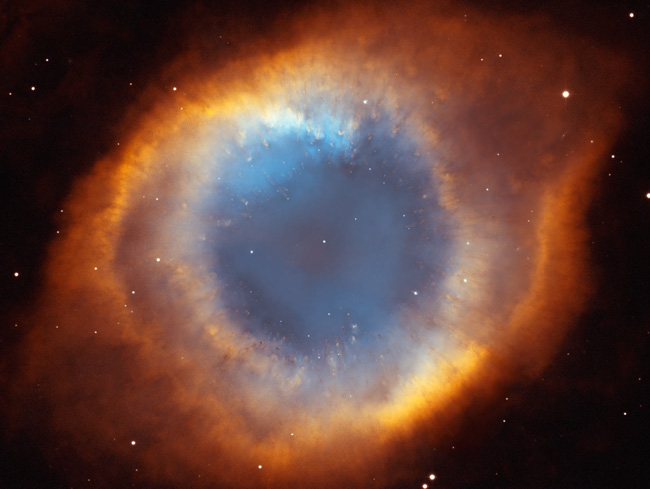
|
Credit & Copyright: NASA,
NOAO,
ESA,
Hubble Helix Nebula Team,
M. Meixner
(STScI),
& T. A. Rector
(NRAO)
Explanation:
Will our
Sun
look like this one day?
The Helix Nebula is the closest example of a planetary nebula created at the end of the life of a Sun-like star.
The outer gasses of the star
expelled into space appear from our vantage point as if we are looking down
a helix.
The remnant central stellar core, destined to become a white dwarf star, glows in light so
energetic it causes the previously expelled gas to fluoresce.
The Helix Nebula, given a technical designation of
NGC 7293,
lies about 650 light-years away towards the
constellation of
Aquarius and spans about 2.5 light-years.
The above picture is a
composite
of newly released images from the
ACS instrument on the
Hubble Space Telescope
and wide-angle images from the Mosaic Camera on the
0.9-m Telescope at
Kitt Peak National Observatory.
A close-up
of the inner edge of the Helix Nebula shows complex gas knots of
unknown origin.
News: Today is Astronomy Day!
|
January February March April May June July August September October November December |
| ||||||||||||||||||||||||||||||||||||||||||||||||
NASA Web Site Statements, Warnings, and Disclaimers
NASA Official: Jay Norris. Specific rights apply.
A service of: LHEA at NASA / GSFC
& Michigan Tech. U.
Based on Astronomy Picture
Of the Day
Publications with keywords: Helix Nebula - NGC 7293
Publications with words: Helix Nebula - NGC 7293
See also:
